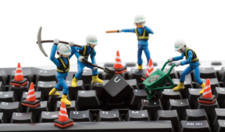Mining the Monero cryptocurrency the CLI way
Mini Miner

© Lead Image © Chode, 123RF.com
The Monero cryptocurrency lets you get in the game without spending thousands on hardware. We'll show you how.
When I started mining Bitcoin 13 years ago, the hardware standard was a bunch of Windows computers built up around the best possible video cards and power supplies. The end goal was to achieve the most hashes per second (H/s, or sometimes expressed as kH/s or mH/s) [1]. To this day, it is easy to find articles explaining how to mine Bitcoin using this classic setup. But few of the mining tools are command-line based, which is a problem for Linux veterans who wish to avoid GUI clutter. But rest assured: A basic Debian system, with the fastest CPU you can get your hands on, is all you need to start mining cryptocurrencies.
In the highly competitive universe of crypto mining, major currencies like Bitcoin are typically mined using specially built Application-Specific Integrated Circuit (ASIC) systems, which require a significant investment of the miner's time and money.
Alternative currencies offer a lower barrier of entry. One alternative cryptocurrency that has gained some recent attention is Monero (abbreviated XMR). Monero stands out because it is truly anonymous [2] and because of its resistance to ASIC hardware mining [3]. This article describes how to start mining XMR on a Debian-based Linux system.
[...]
Buy this article as PDF
(incl. VAT)
